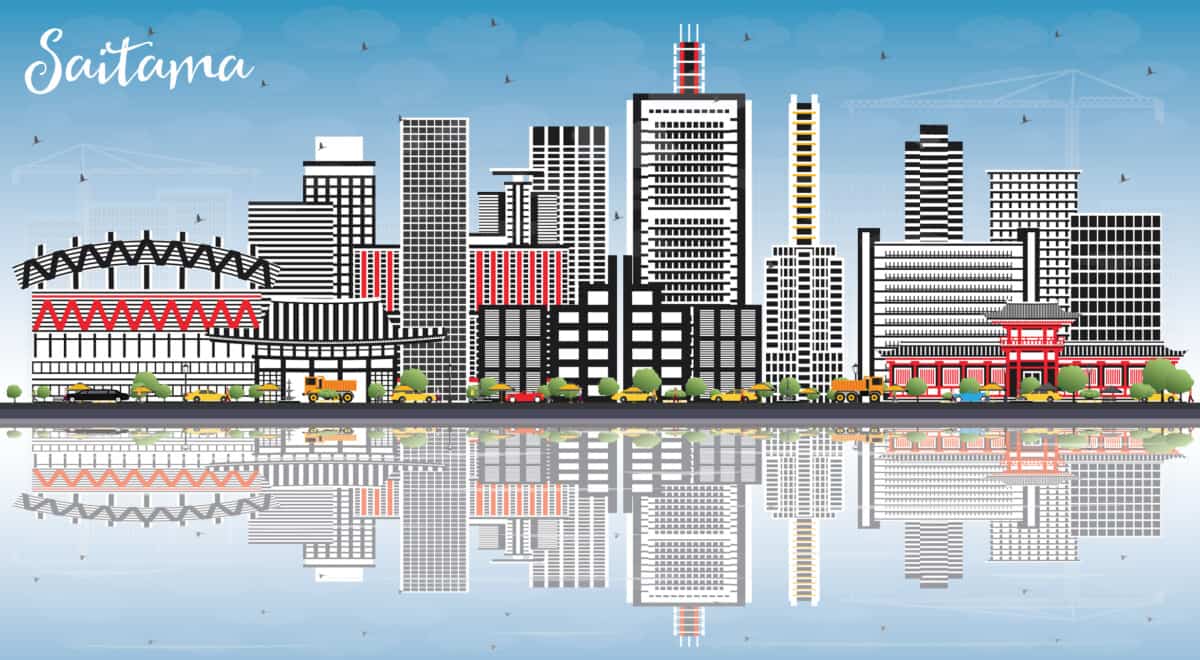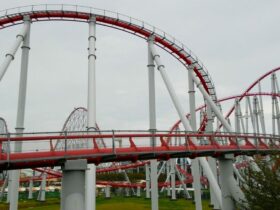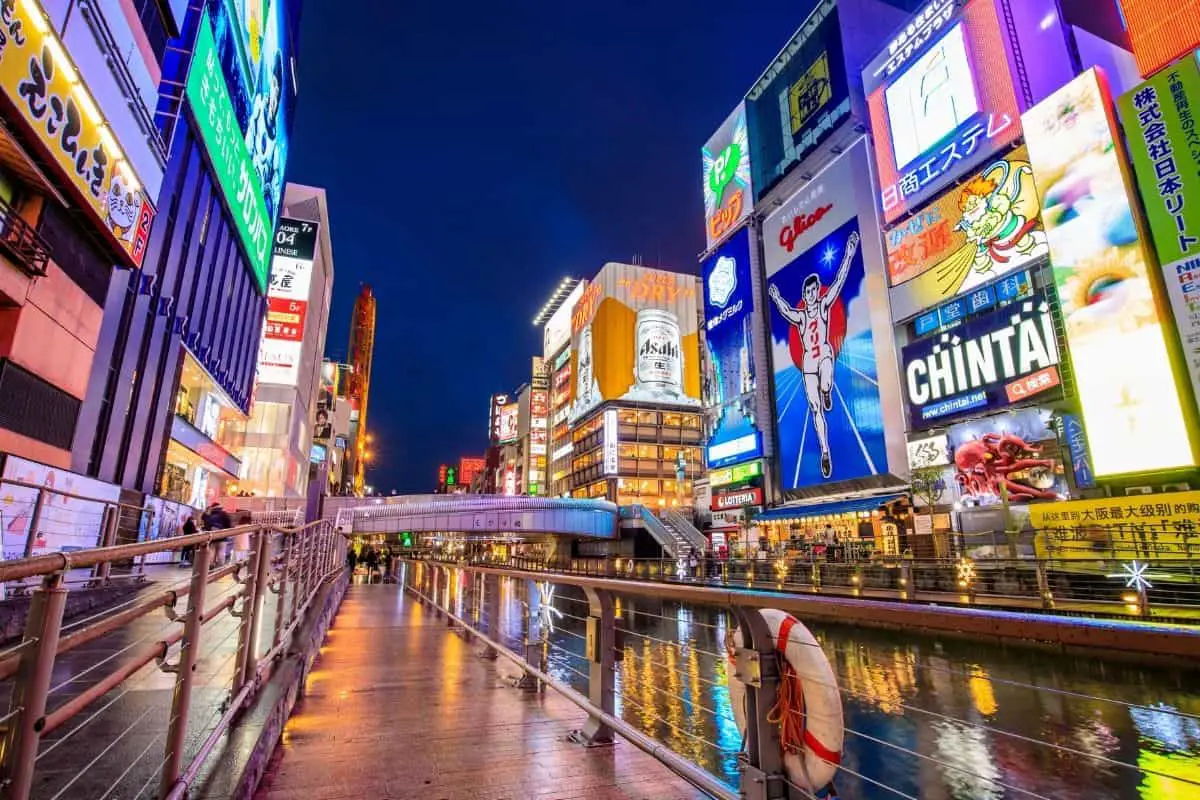Saitama is oft unfairly overlooked by foreign travelers, which is unfortunate since this Japanese prefecture has all it takes to be a tourist hotspot: it’s easily accessible, and boasts plenty of culturally significant places, as well as natural attractions.
Saitama is a part of the Greater Tokyo Area. The distance between central Tokyo and the capital city of the prefecture (also named Saitama) is only around 30 kilometers (around 19 miles), with other major tourist destinations like Omiya and Kawagoe not very far.
Even if you were only planning to spend a few days in Tokyo, taking a trip to Saitama is so easy that it only makes sense to add it to your travel itinerary – if only for a single day.
The trip to either the capital, Omiya or Kawagoe would take only around 45 minutes by car and around an hour by train (depending on the line you choose – and yes, there are multiple),
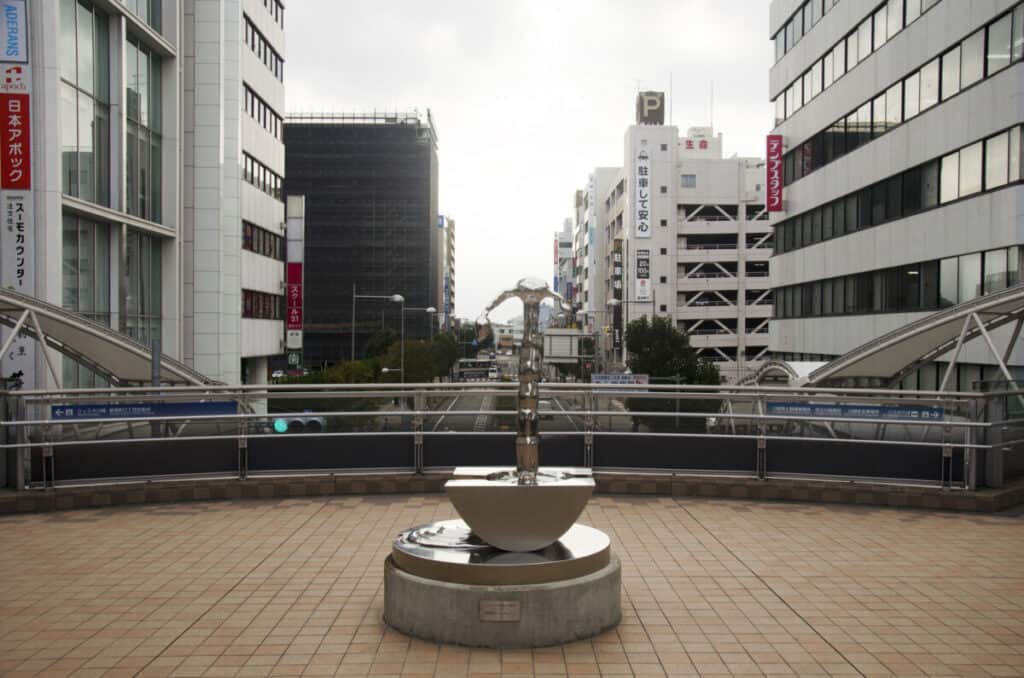
Here are the five most interesting Saitama attractions that cover the main essentials you should try to include in your trip above all the rest, especially if you’re working within time constraints.
We have it all from history to culture to technology to nature to make sure your trip to Saitama covers everything the region has to offer:
1. Hikawa Shrine
Saitama’s Hikawa Shrine – or Musashi Ichinomiya Hikawa Shrine (there are multiple Hiwaka Shrines in Japan) – of the most important Shinto shrines in the Greater Tokyo Area.
Hikawa shrines traditionally enshrine Susanoo, the kami of storms and seas, who is one of the three most important deities in Shinto mythology (along with his sister Amaterasu and son Okuninushi).
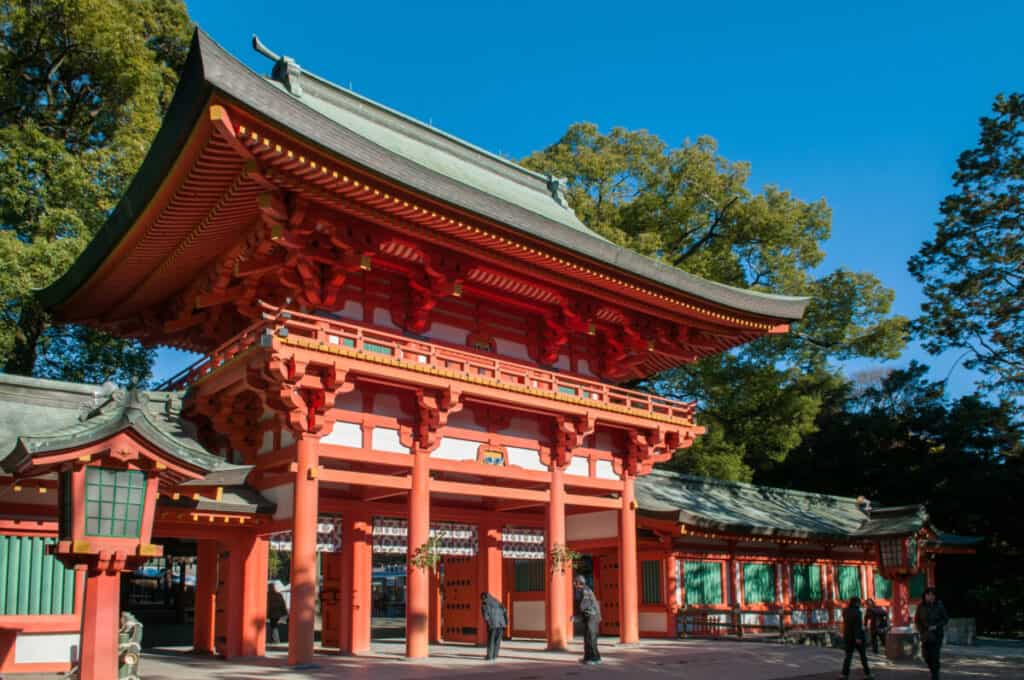
Saitama’s Hikawa Shrine is the most important among them, which makes it one of the most visited during special occasions.
However, for the most part, it’s a beautifully tranquil place, surrounded by lush greenery. The massive park surrounding the shrine includes many auxiliary buildings, a museum, and even a zoo.
This is one of the premier cherry blossom viewing (hanami) places in Saitama, so if you happen to be visiting the city at the right time, do try to get a spot somewhere near the cherry trees – it’s something to be experienced for sure.
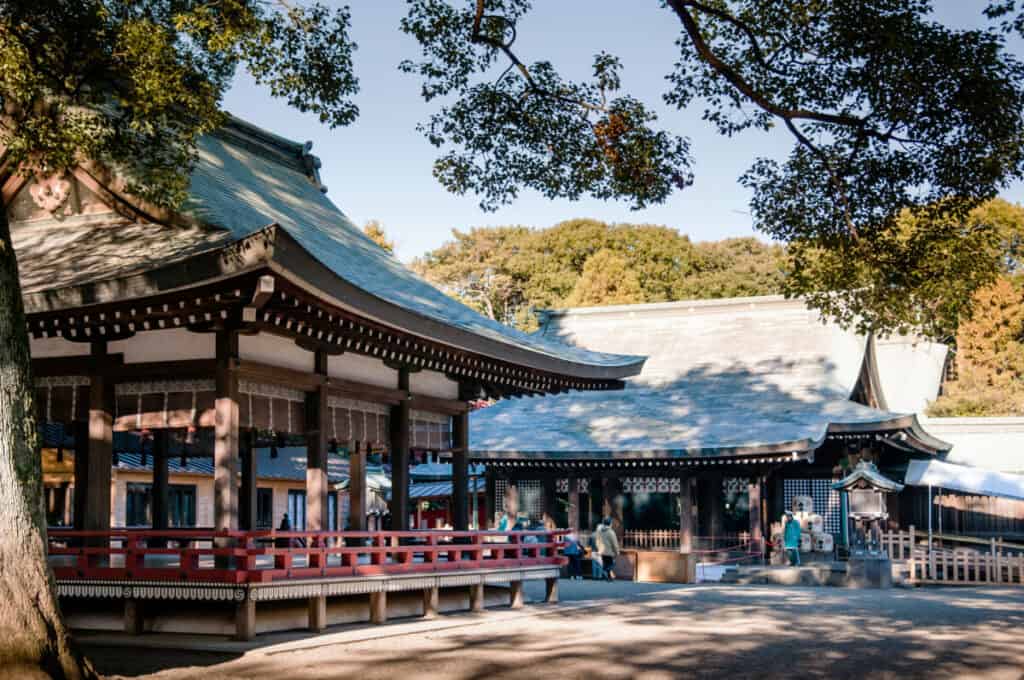
But even if you’re visiting when the Hanami (flower watching season) is over, do take your time to walk around the park and take it in.
The main shrine building is said to have been built 473BC, but the complex has greatly expanded over the years, with additions as recent as the 1940s.
There are several shrine buildings, all beautiful and deserving of attention, but if you’re on a tight schedule, the one you want to visit is the main shrine, which is easy to find – it’s right behind a massive two-storied red Romon Gate – an attraction site in and of itself.
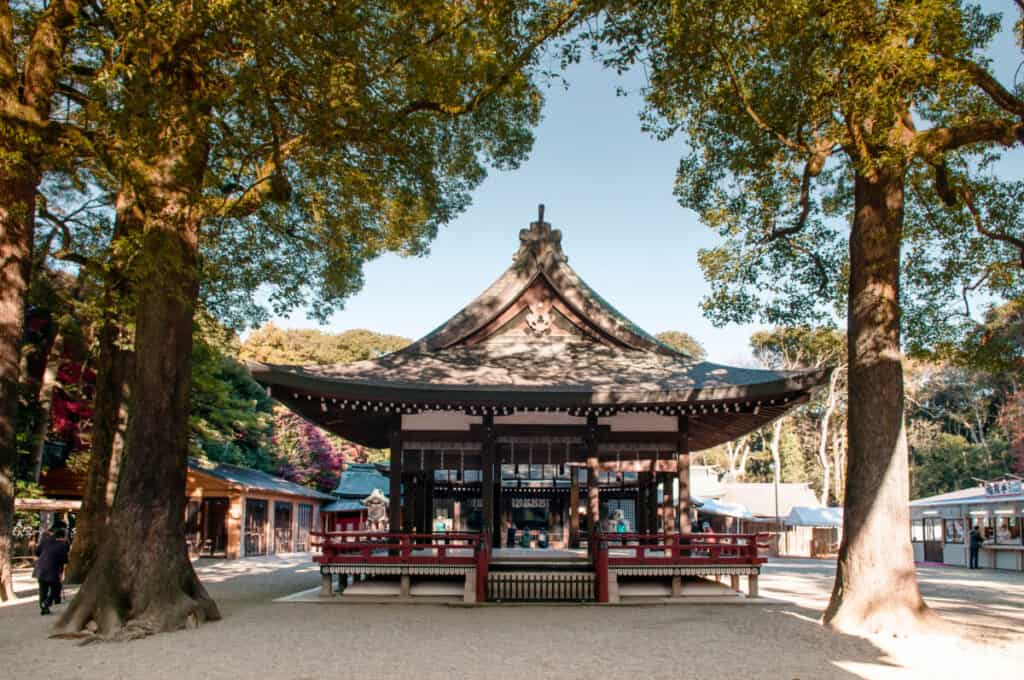
When to visit: the shrine grounds are open from 5 AM to 6 PM during summer months and from 6 AM to 5 PM during winter months. Do check the official sources before planning a visit.
How to get there: by foot from either Omiya Station (around 20 minutes) or Kita Omiya Station (around 10 minutes).
2. The Railway Museum
Saitama’s Railway Museum opened in 2007 and has been a massive attraction ever since. The Museum was built by JR East, a major railway company. it is currently operated by its affiliate nonprofit foundation, East Japan Railway Culture Foundation.
The museum acts as a portal through the history of the railway in Japan, displaying many of the train cars that actually ran on the rails in the past.
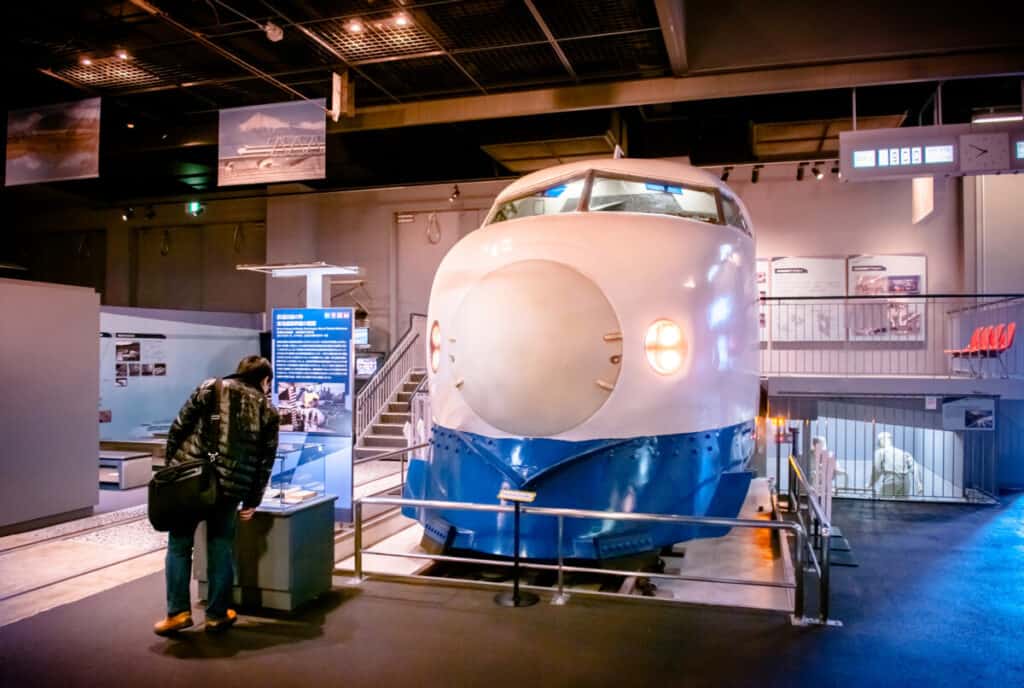
Among them are the ancient (at least in the technological age) steam locomotives, diesel locomotives, freight cars, and even a retired shinkansen). Most of these cars can either be entered and viewed from the inside, or at the very least viewed from the exterior.
The museum also boasts an impressive collection of dioramas (including one of the largest in Japan), as well as storage with historical books and artifacts, a research room, a multi-purpose hall, a gallery balcony, video booths, cafeteria and gift shop, and – last but certainly not least – a train car driving simulators.

Most of the simulators operate on a first-come-first-serve basis, so get ready to spend some time in a queue if you’re determined to try one out. On the bright side – most of them don’t require an additional fee either.
The museum’s most popular attraction – a realistic steam locomotive simulator – does require an additional fee, however, this does increase your chances of trying it out quickly, as there are limited spots per day and you need to register in advance.
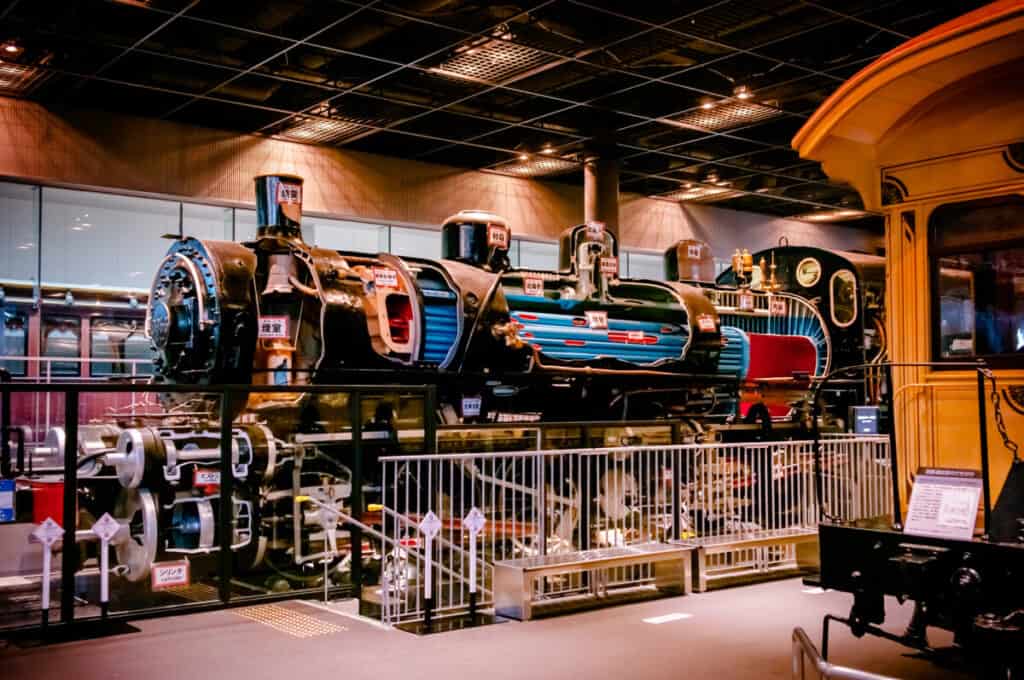
When to visit: the Railway Museum is open year-round from 10 AM to 6 PM, Wednesday to Monday. It may be closed for New Year’s and some other holidays, so do check in with official sources before planning a visit.
How to get there: by taking a ride on New Shuttle from Omiya Station to Tetsudo Hakubutsukan Station.
3. Omiya Bonsai Village
An important thing to note – Omiya Bonsai Village isn’t just a fancy name for a museum, it’s an actual inhabited township with multiple private houses.
However, life here revolves fully around bonsais. Most private houses have superb bonsai displays right there in their gardens.
The village, unsurprisingly, also houses multiple bonsai nurseries open to visitors and a bonsai art museum which opened in 2010 (not to be missed!).
Saitama Bonsai Museum Official Website
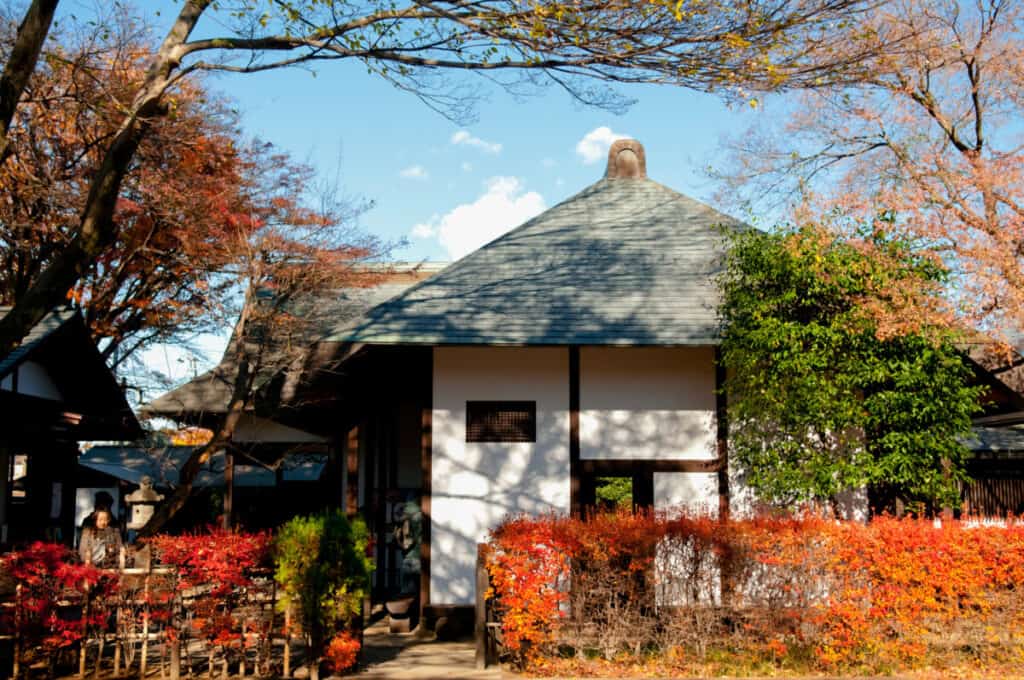
The village dates all the way back to 1925 when bonsai specialists of Tokyo decided to look for an alternate location (mostly to escape adverse effects of the 1923 earthquake), and chose Omiya due to bonsai-friendly biosphere.
If you wish to simply walk around, rest a bit, and take a lot of very Instagram-friendly photos – this is the place.
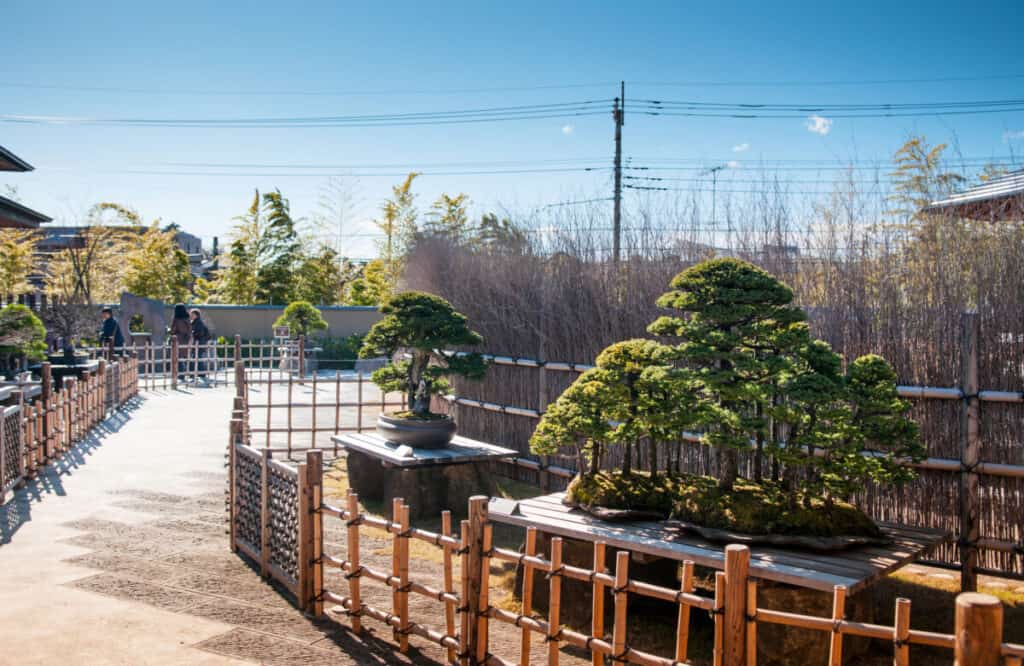
When to visit: Omiya Bonsai Village is open from 9 AM to 4 PM in Winter and 4:30 PM in Summer, Friday to Wednesday. It may, however, be open on Thursdays on certain holidays – do check the official sources when planning a visit.
How to get there: it’s within walking distance from Toro Station (a 5-minute ride from Omiya Station).
4. Kawagoe
Kawagoe is a historical city in Saitama Prefecture, often referred to as “Little Edo” (Ko-edo). It’s around 12 miles away from Saitama (the Capital city), and easily reachable via train.
One of the main attractions of Kawagoe is its warehouse district, which still houses multiple historical clay-walled buildings called Kurazukuri.
The street is a well-preserved peek into the past, as well as a tourist hub with multiple gift shops, stalls, and restaurants, many of which specialize in regional cuisine.
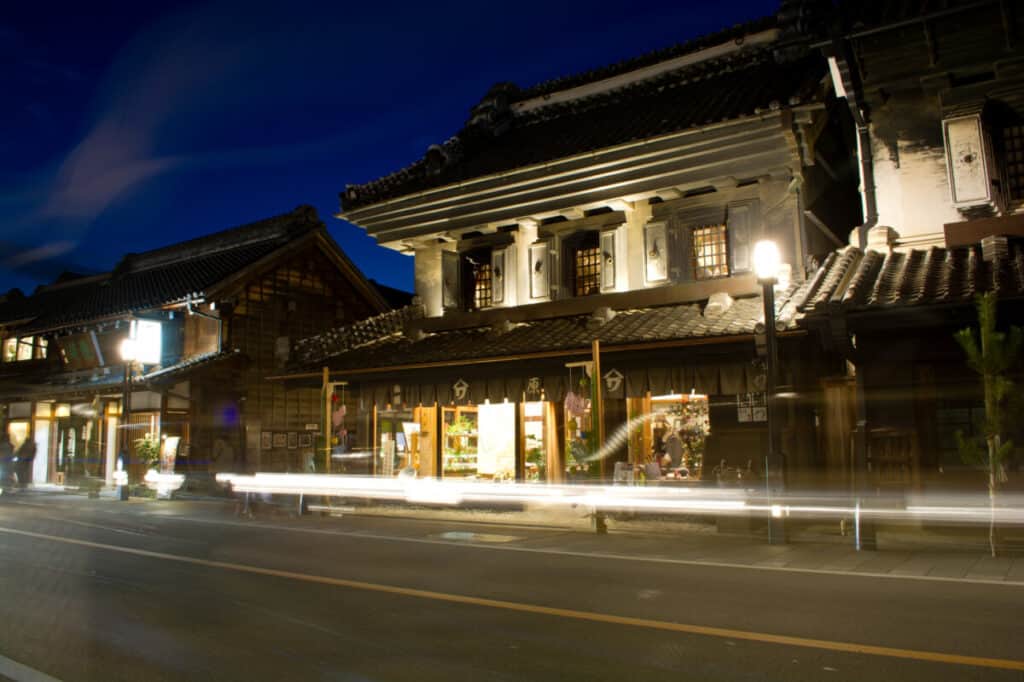
Another must-see destination is Honmaru Goten – the only remaining building of historical Kawagoe Castle that dates back to 1848 and almost fully preserves its original looks.
The original castle is said to have dated all the way back to 1457, but, unfortunately, nothing of the original building remains.
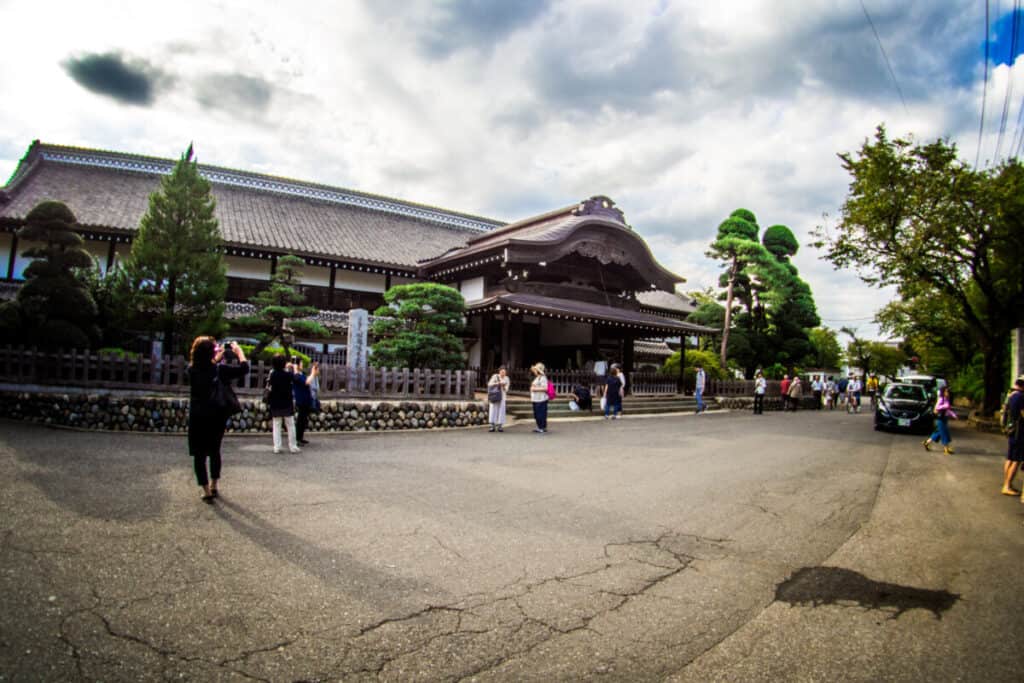
When to visit: The warehouse district and Honmaru Goten are within 10-minute of walking from each other.
Honmaru Goten is open from 9 AM to 5 PM and closed on Mondays (but open if Monday is a national holiday), as well as the 4th Friday of every month, and during New Year’s celebrations.
How to get there: Via car or train from Kita-Urawa Station of Saitama City.
5. Metropolitan Area Outer Underground Discharge Channel
If you’re hunting for a truly unique experience then you should take a trip to Kasukabe. This special city (that’s the official designation, Tokureishi, though the city is special indeed) is home to Metropolitan Area Outer Underground Discharge Channel.
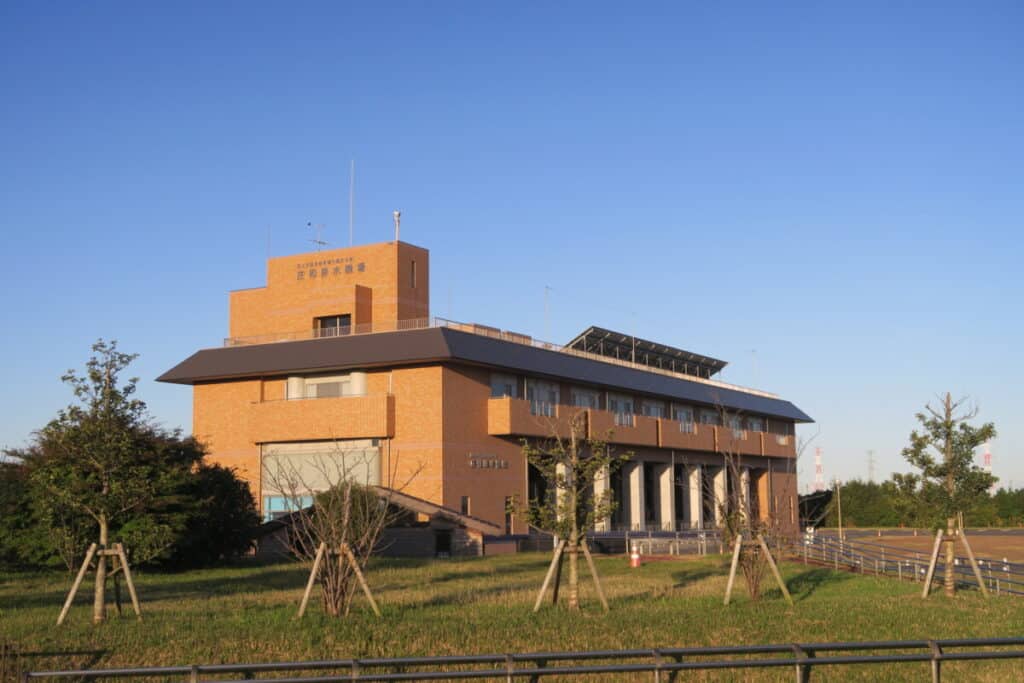
This is a massive engineering infrastructure project built between 1992-2006 to divert massive water influx away from Tokyo during typhoon season to avoid overflowing the megapolis’s waterways.
It’s also the largest underground floodwater diversion facility in the world and is often referred to as “The Underground Pantheon” due to the similarities in structures: the massive water tank (it’s 25.4m/83ft~ high and 177m/581ft~ long, with a width of 78m/256ft~) rests upon 59 pillars, each 18m/59ft~ high and 2m/6.5ft~ wide.
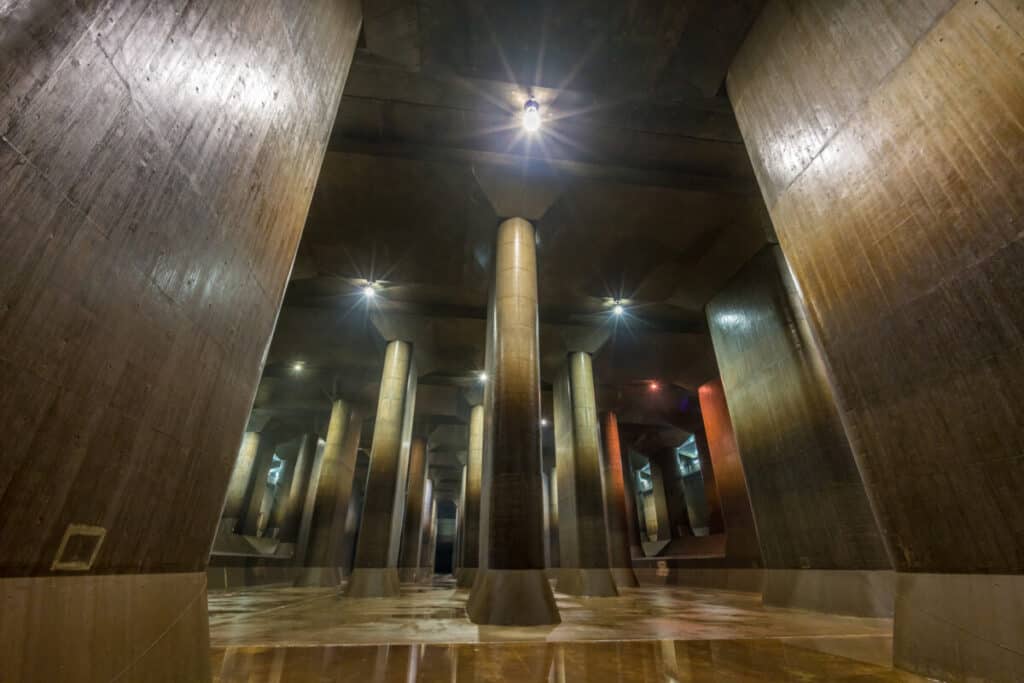
When to visit: The Discharge Channel is becoming one of the biggest tourist attractions in Saitama prefecture and is accessible to public visitors when unused by floodwaters via guided tours. The tours last 1.5 hours and need to be booked in advance.
How to get there: Via trom Saitama’s Kita-Urawa Station to Kasukabe Station. Then from Kasukabe Station to Minami-Sakurai Station (North Exit)

